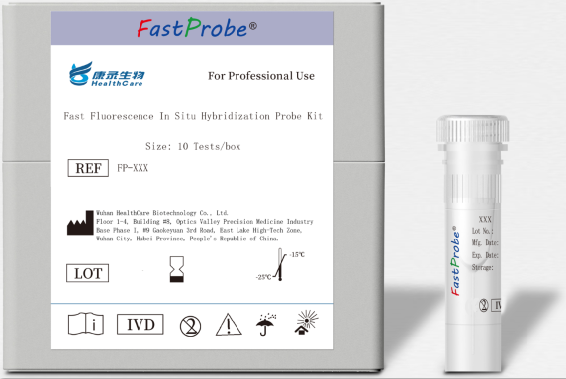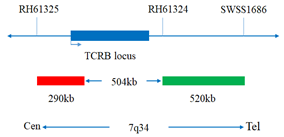IVD - FP317 TCRB (7q34) Gene Break Apart Probe Detection Kit

Cat.# FP-317: TCRB (7q34) Gene Break Apart Probe Detection Kit
[Overview]
T cell receptors recognize foreign antigens which have been processed as small peptides and bound to major histocompatibility complex (MHC) molecules at the surface of antigen presenting cells (APC). Each T cell receptor is a dimer consisting of one alpha and one beta chain or one delta and one gamma chain. In a single cell, the T cell receptor loci are rearranged and expressed in the order delta, gamma, beta, and alpha. If both delta and gamma rearrangements produce functional chains, the cell expresses delta and gamma. If not, the cell proceeds to rearrange the beta and alpha loci. This region represents the germline organization of the T cell receptor beta locus. The beta locus includes V (variable), J (joining), diversity (D), and C (constant) segments. During T cell development, the beta chain is synthesized by a recombination event at the DNA level joining a D segment with a J segment; a V segment is then joined to the D-J gene. The C segment is later joined by splicing at the RNA level. Recombination of many different V segments with several J segments provides a wide range of antigen recognition. Additional diversity is attained by junctional diversity, resulting from the random additional of nucleotides by terminal deoxynucleotidyltransferase. Several V segments and one J segment of the beta locus are known to be incapable of encoding a protein and are considered pseudogenes. The beta locus also includes eight trypsinogen genes, three of which encode functional proteins and five of which are pseudogenes. Chromosomal abnormalities involving the T-cell receptor beta locus have been associated with T-cell lymphomas. [provided by RefSeq, Jul 2008].

[Download] TCRB (7q34) Gene Break Apart Probe Instructions
[Download MSDS] MSDS

